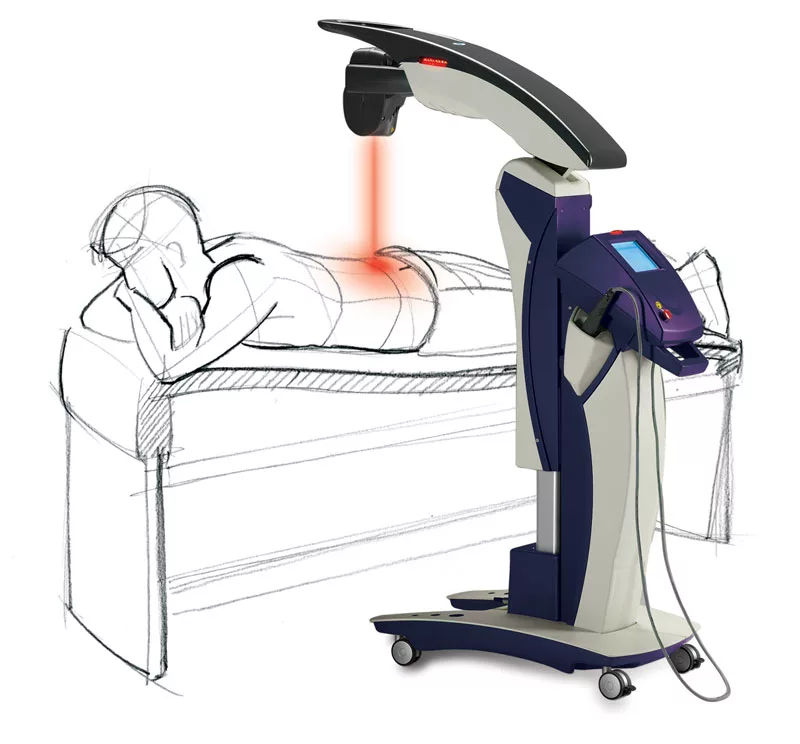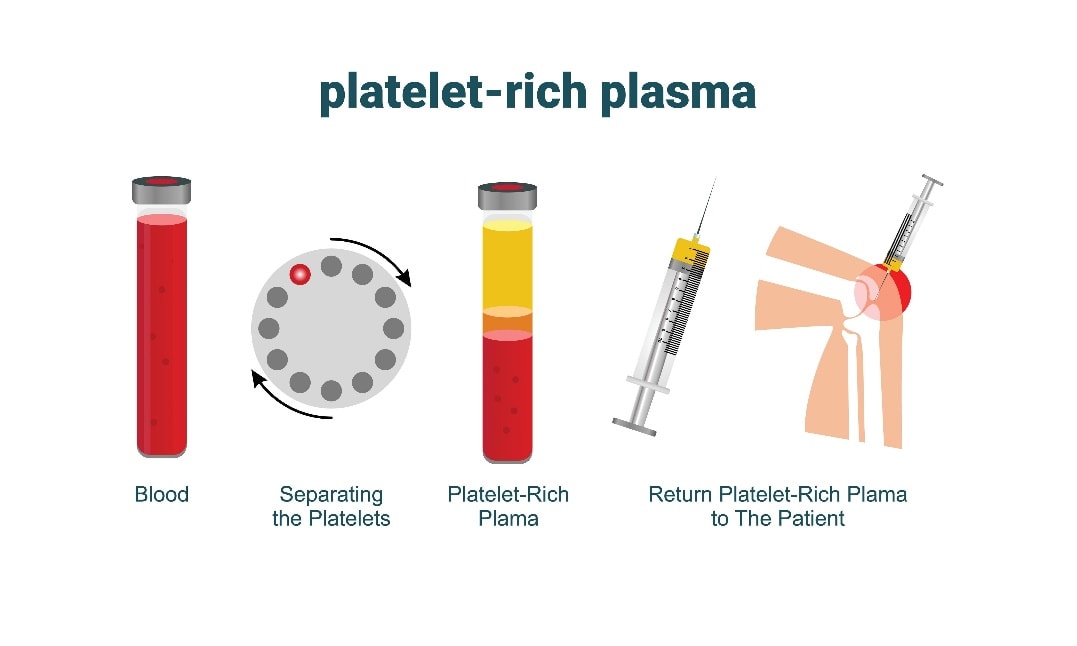Platelet-rich plasma (PRP) is often used to treat painful orthopedic conditions. These treatments have shown promising results in various muscle, tendon, spine and joint conditions and injuries. To further enhance the healing process and optimize outcomes, we have begun incorporating MLS laser therapy into post-PRP recovery protocols. In this blog post, we will explore the use of MLS laser therapy and its benefits in accelerating recovery and promoting healing after PRP treatments.
Understanding PRP Treatments
At Regenexx Las Vegas, we use PRP injection therapy to treat many mild to moderate degenerative conditions and injuries effecting your joints, spine, or muscles/ligaments/tendons. The process involves extracting a patient’s own blood, processing it in our Cell processing lab to concentrate the platelets, growth factors, and cytokines, and injecting the resulting PRP solution into the affected area precisely via image guidance.
Role of MLS Laser Therapy:
MLS (Multiwave Locked System) laser therapy is a non-invasive treatment that utilizes synchronized dual wavelengths of laser light to stimulate tissue healing and reduce pain and inflammation. The combination of continuous and pulsed laser emissions in MLS therapy offers unique biological effects, enhancing cellular metabolism and increasing the production of ATP (adenosine triphosphate), the energy currency of cells. These effects are particularly valuable in the context of post-PRP treatment recovery, as they can potentiate the healing process.
The Treatment
We use it starting 1-2 weeks post PRP procedure and typically recommend 6 sessions to be performed 2-3 times per week.
Benefits of MLS Laser Therapy for Post-PRP Treatment
- Enhanced Cellular Function: MLS laser therapy stimulates cellular activity and increases blood flow to the treated area, which can expedite the migration of PRP growth factors and stem cells, promoting their therapeutic effects. The laser energy helps create an optimal environment for cellular repair and regeneration.
- Reduced Inflammation: Inflammation is a natural response following PRP and stem cell treatments. MLS laser therapy has been shown to effectively reduce inflammation by modulating cytokines and increasing the production of anti-inflammatory mediators. This can lead to decreased swelling, pain, and discomfort, allowing patients to recover more comfortably.
- Accelerated Healing: MLS laser therapy stimulates the production of collagen, a crucial protein responsible for tissue repair. By promoting collagen synthesis, the laser therapy aids in the formation of new blood vessels, accelerates wound healing, and improves the overall structural integrity of the treated area.
- Pain Management: Post-treatment discomfort can be present after PRP treatment. MLS laser therapy has analgesic properties, which help alleviate pain by desensitizing nerve endings and blocking pain signals. This enables patients to experience relief from treatment-related discomfort.
- Improved Range of Motion and Function: By reducing inflammation, promoting tissue healing, and alleviating pain, MLS laser therapy can contribute to improved range of motion and functional outcomes. This is especially beneficial for patients undergoing joint or musculoskeletal treatments, as it aids in their rehabilitation and recovery process.
Conclusion
MLS laser therapy serves as a valuable adjunct to post-PRP treatment recovery protocols. Its ability to enhance cellular function, reduce inflammation, accelerate healing, manage pain, and improve functional outcomes makes it an attractive modality for optimizing the benefits of these regenerative therapies. As research and clinical experience continue to advance, the combined use of MLS laser therapy with PRP has the potential for improved recovery and healing opportunities.

